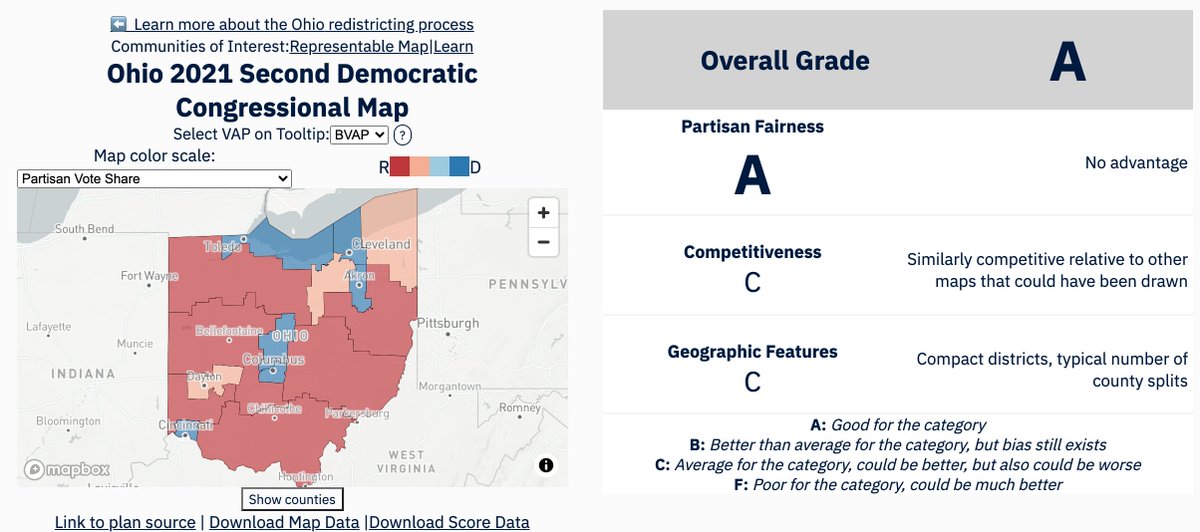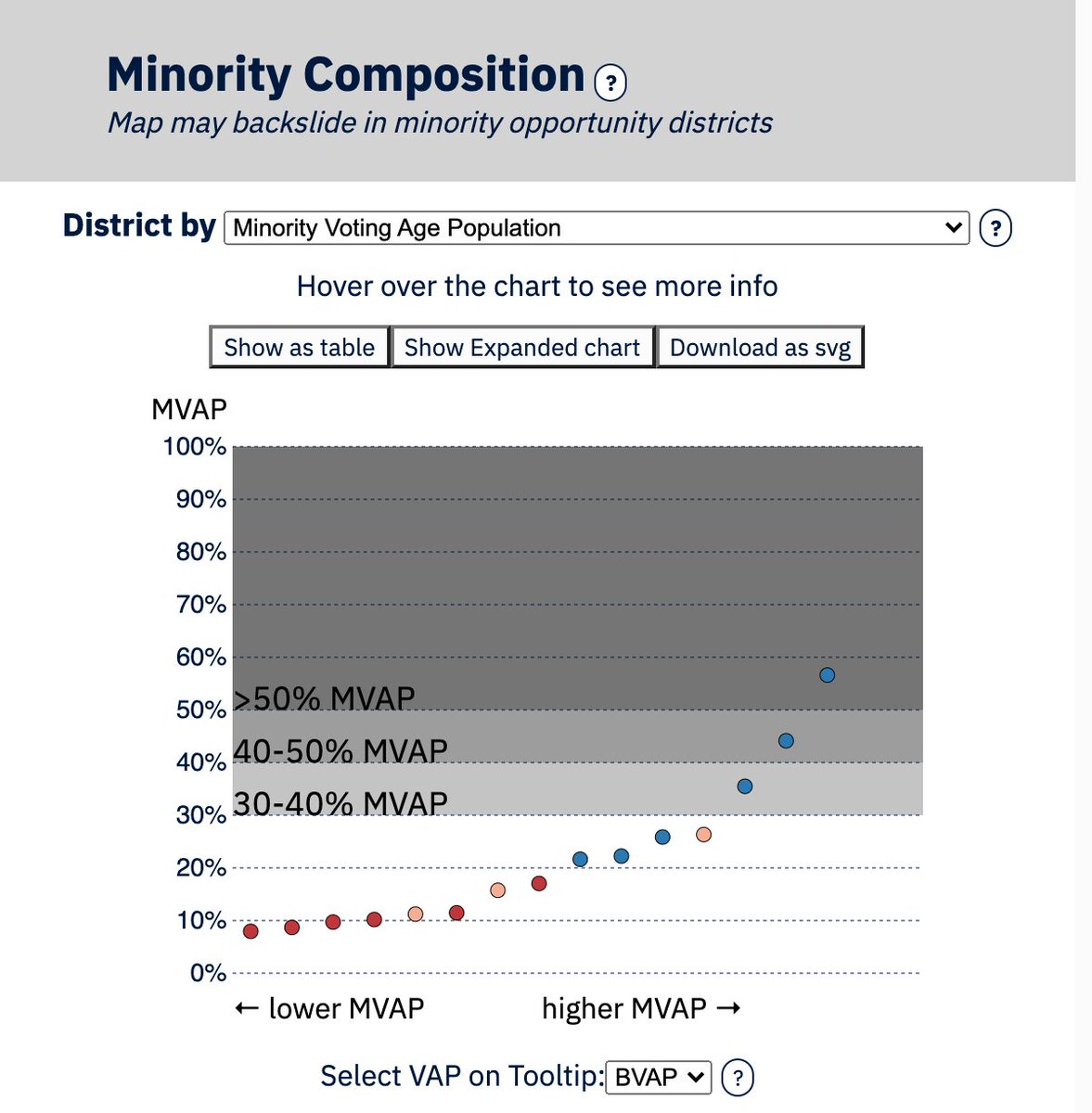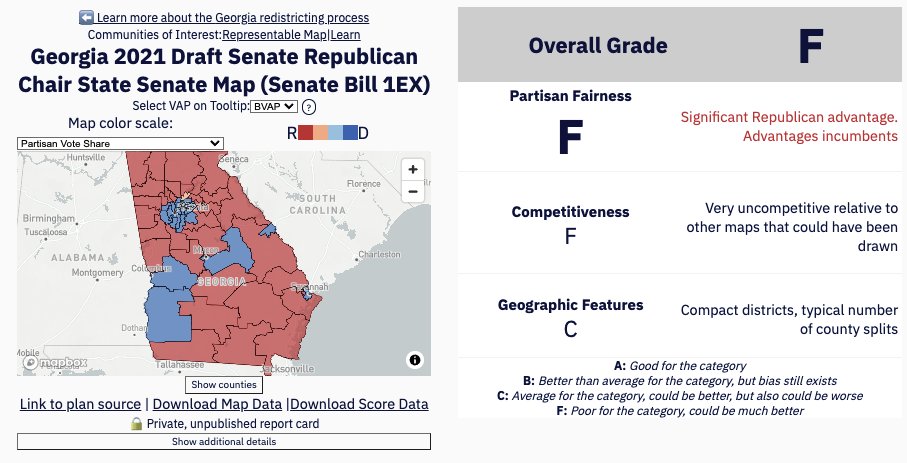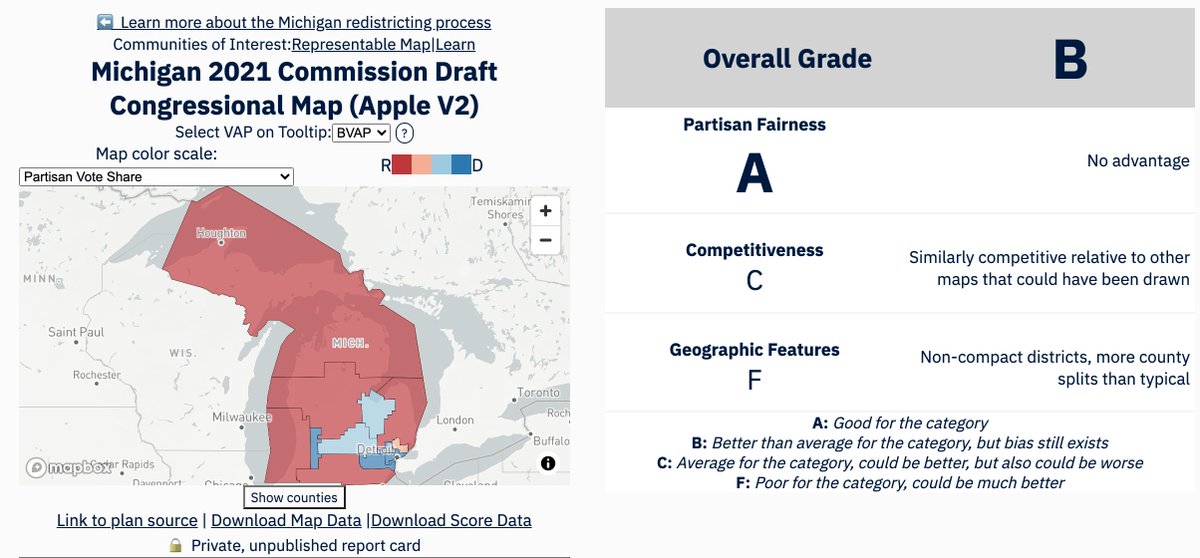Another mountain west state that has an advisory commission, Utah's Independent Redistricting Commission also has selected the maps it will propose to the state legislature and we've got grades!
First up, the three Congressional proposals:
Public SH2: gerrymander.princeton.edu/redistricting-…
Orange 3: gerrymander.princeton.edu/redistricting-…
Purple 4: gerrymander.princeton.edu/redistricting-…
Public SH2: gerrymander.princeton.edu/redistricting-…
Orange 3: gerrymander.princeton.edu/redistricting-…
Purple 4: gerrymander.princeton.edu/redistricting-…

Public SH2 gets an A overall and in Partisan Fairness, and Cs in Competitiveness and Geography. It, along with the other Congressional proposals, would create a Democratic-leaning district around Salt Lake City. 

Orange 3 gets a slightly better grade on Geography (a B) because it proposes more compact districts than the other two proposals. 

Purple 4 gets the same scores as Public SH2, though its Democratic district around Salt Lake City is slightly closer to competitive than the other two proposals. 

Next up, the Utah State Senate:
Green: gerrymander.princeton.edu/redistricting-…
Orange: gerrymander.princeton.edu/redistricting-…
Purple: gerrymander.princeton.edu/redistricting-…
Green: gerrymander.princeton.edu/redistricting-…
Orange: gerrymander.princeton.edu/redistricting-…
Purple: gerrymander.princeton.edu/redistricting-…

Green gets an A overall and in Partisan Fairness, with a C in Competitiveness and a B in Geography. It would elect a 24R-5D Senate, with two competitive seats.
It has one district, District 17 (West Valley City), with a minority population of over 50% and the seat leans R.
It has one district, District 17 (West Valley City), with a minority population of over 50% and the seat leans R.

Orange also gets As Overall and in Partisan Fairness, and a C in Competitiveness, but it gets a C in Geography. It would elect 5 Democrats and has 3 competitive seats.
District 1 (just south of the airport) has a majority minority population, though it leans Democratic.
District 1 (just south of the airport) has a majority minority population, though it leans Democratic.

Finally for State Senate, we have Purple, which gets Bs overall and in Partisan Fairness, and Cs in Competitiveness and Geography.
It would elect 4 Dems, with 3 competitive seats, and 2 districts (1 and 5) have a minority population over 50%.
It would elect 4 Dems, with 3 competitive seats, and 2 districts (1 and 5) have a minority population over 50%.

Next are the State House maps:
House Orange 1: gerrymander.princeton.edu/redistricting-…
House Purple 2: gerrymander.princeton.edu/redistricting-…
House Green 1: gerrymander.princeton.edu/redistricting-…
House Orange 1: gerrymander.princeton.edu/redistricting-…
House Purple 2: gerrymander.princeton.edu/redistricting-…
House Green 1: gerrymander.princeton.edu/redistricting-…

For Map Orange, we gave an A overall and in Partisan Fairness and Competitiveness, and a C in Geography.
Out of 75 seats, it would elect 12 Democrats and there are 12 competitive seats, though 9 of those lean Republican. It has 3 districts with an MVAP greater than 50%.
Out of 75 seats, it would elect 12 Democrats and there are 12 competitive seats, though 9 of those lean Republican. It has 3 districts with an MVAP greater than 50%.

Next is Map Green, which gets As overall and in Partisan Fairness and Cs in Competitiveness and Geography. It would elect 14 Democrats, and has 8 competitive seats.
It has two districts with an MVAP over 50%.
It has two districts with an MVAP over 50%.

Finally is Map Purple. It also gets an A overall and in Partisan Fairness, with Cs in Competitiveness and Geography. It would also elect 14 Democrats and has 10 competitive seats.
It has three districts with an MVAP over 50%.
It has three districts with an MVAP over 50%.

These maps are pretty good. They do a good job of representing the partisan interests of the residents of Utah, and they were drawn by folks who were listening to citizens about what they hoped to see in their maps.
#PGP_UT #UTPol #FairMaps #Redistricting
@UtahRedistrict
#PGP_UT #UTPol #FairMaps #Redistricting
@UtahRedistrict
• • •
Missing some Tweet in this thread? You can try to
force a refresh




















